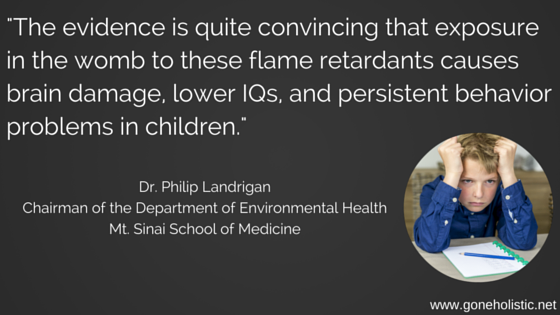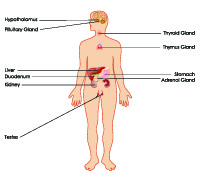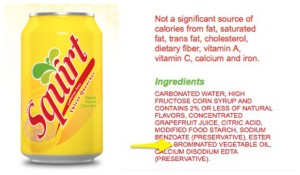
Updated September 30, 2023
Flame retardant chemicals are everywhere in our environment, even in items we might not ever suspect! They’re in electronics, in furniture that contains polyurethane foam (upholstered furniture), mattresses, home insulation, carpets, and in baby products such as diaper changing pads, high chairs, and even car seats.
While they may seem like they are an important safety measure, they are associated with issues in brain development, linked to lower IQ, behavior problems, and attention issues in children. Other health effects that flame retardant chemicals are linked to include obesity, cardiac disease, hormone disruption, and thyroid issues; not to mention some may also be cancer-causing.
Flame retardants can even be found in clothing, such as children’s pajamas. To meet the US Consumer Product Safety Commission’s guidelines for children’s sleepwear, children’s pajamas must meet flammability requirements that state sleepwear in sizes 9 months and up to size 14 must pass flammability testing. Snug or tight-fitting pajamas are exempt, so these PJs might be your best bet if you want to avoid flame retardants.
What are flame retardants, and how are we exposed?
Most of the exposure occurs through inhalation or swallowing of regular household dust! Did you know that house dust is the #1 source of toxins in a home? Many flame retardants are additives, meaning that they are added to, rather than chemically bound to the item, so they can escape through products in the form of dust particles. This is why it’s important to check your upholstered furniture and replace any torn coverings or foam. Even if there are not any tears, these chemicals can escape every time you sit down, or any time you lay down on your bed.
A new study has found that 100% of the mothers and children studied had a chemical in their bodies that breaks down from chlorinated tris. More disturbing is that children had up to 5 times higher concentrations than their mothers. This could be because babies and children are tied more closely to their environment because they spend more time on the floor, stick their fingers in their mouths, and chew on toys. When we take into account all of the other places they’re exposed, such as high chairs, changing pads, car seats, and even in the pajamas they sleep in, it makes sense that babies and children would have higher levels.
their environment because they spend more time on the floor, stick their fingers in their mouths, and chew on toys. When we take into account all of the other places they’re exposed, such as high chairs, changing pads, car seats, and even in the pajamas they sleep in, it makes sense that babies and children would have higher levels.
Children also do not have developed enough systems to detoxify chemicals and flush them out of the body quickly, so chemicals can build up in their bodies. One solution is to have children wash their hands often: a study found that children who wash their hands five or more times a day had flame retardant levels that are 30% – 50% lower than those who wash their hands less often.
Flame Retardants and Brain Development
In 2014, Drs. Phillipe Grandjean and Philip Landrigan published a study in the Lancet Neurology, identifying chemicals that may injure the the developing brain. This list included PBDEs, which are brominated flame retardants. Although PBDEs have been removed from the market due to safety concerns, they have been replaced by other chemicals such as TDCIPP (chlorinated tris), and chemical mixtures such as Firemaster® 550, which is another type of brominated flame retardant.
These alternative chemicals are still linked to toxicity and health concerns such as obesity, cardiac disease, early puberty, reproductive problems, and blood sugar issues. Not to mention that flame retardants have been linked to lower IQ, hindering brain development, and problems with memory and motor skills. A study published in the journal Environmental Health Perspectives in 2013 found that both prenatal and childhood PBDE exposure was associated with problems with attention, fine motor coordination, and cognition in the study’s school-age children. This study, the largest to date, reveals growing evidence suggesting that PBDEs have adverse impacts on children’s neurobehavioral development.
Toxic Overload and Learning
Toxic overload is taking in toxins faster than the body can get rid of them so they just keep accumulating inside the body. Toxic overload can take a toll not only on your child’s health, but also on their academic performance as well as behavior.
If your child is already struggling with learning disabilities, exposure to environmental chemicals can add his/her difficulties.
Plus, we already know that children do not developed enough detoxification systems to take on these extra chemicals and flush them out of the body quickly, so it’s important to avoid unnecessary toxins whenever possible.
Flame Retardants as Endocrine Disruptors: A Variety of Health Issues
Flame retardants act as endocrine disruptors, and growing behavioral research on the effects of endocrine-disrupting chemicals reveal that the brain is a “vulnerable” target of these chemicals, especially during development. Animal studies have shown that endocrine disruptors cause changes in brain development, affecting the development of neurons and neurotransmitters, and event the structure of the brain.
An endocrine disruptor is a man-made chemical or substance that interferes with the function of the endocrine system. The endocrine system regulates every function of the body. It is composed of the thyroid, pituitary and adrenal glands, pancreas, ovaries, and testes.
The endocrine system is where our hormones (“chemical messengers”) are made. So if you can imagine a synthetic substance either imitating or getting in the way of a hormone trying to do its job, you can see where this can cause health issues to crop up. Here’s where we can also see where other issues such as obesity, cardiovascular disease, thyroid issues, and blood sugar problems (such as insulin resistance or diabetes) can occur.
You May be Drinking Flame Retardants
You may have heard about the ingredient brominated vegetable oil (BVO), and how some soda manufacturers are removing it from their products lines after a teenager started a Change.org petition. Brominated vegetable oil is patented as a flame retardant, and is now used as an emulsifier in citrus-flavored sports drinks and sodas to evenly distribute the flavoring oils throughout the liquid. According to WebMD, Brominated vegetable oil is in the same chemical family as PBDEs (which, remember, have been voluntarily phased out due to health issues!)
BVO was given the safety term “interim status” in the 1970s, which means that beverage companies can continue to use it in limited amounts, pending the results of safety studies. Those studies never happened, and BVO is still being used in some some beverages. Coca-Cola and Pepsi are phasing it out, and it has been banned in The European Union, China, and Japan, but it still remains in use in the U.S. in sodas such as Mountain Dew, Sunkist Peach Soda, and Squirt.
How much extra protection do flame retardants offer?
So you may be wondering what can we do if flame retardants make products less flammable – doesn’t it seem safer to have them? Surprisingly, maybe not! A study from the University of Central Lancashire in the United Kingdom found that flame retardants actually increase the amounts of carbon monoxide and hydrogen cyanide released during combustion.
Inhalation of these two gases has resulted in 60% to 80% of fire-related deaths. Hydrogen cyanide is 35 times more deadly than carbon monoxide, and it can kill in less than a minute during a fire. If you’re worried about buying products that are not flame-resistant, it’s good to know the health benefits of avoiding them may outweigh the potential risks.
Tips to Avoid Flame Retardants
While flame retardant chemicals are almost everywhere, you can reduce exposure in your home by following some simple steps:
- Beware of polyurethane foam products (upholstered furniture, mattresses, pillows, etc.) manufactured before 2005.
- Replace any torn furniture covers or foam that is breaking down.
- Avoid “TB 117” on the product label. If it says this, the product most likely contains flame retardants.
- Updated labeling with “TB 117-2013” (may also be stated as Technical Bulletin 117-13) means the product meets new manufacturing guidelines (using fewer or no flame retardant chemicals) so it is a better bet, but it does not mean the product is free of the chemicals. Check with the manufacturer to see if any of these chemicals have been added.
- Choose other fill in the place of polyurethane foam, such as down, wool stuffing, latex foam, or polyester fiberfill.
- Wash your hands, especially before eating, to avoid ingesting these chemicals.
- Damp mop and dust frequently to keep dust at bay, and vacuum with a HEPA filter. Pay special attention to places where children play most (especially on the floor).
- Look for carpets that have the Green Label or Green Label Plus certification. These carpets have the lowest-emitting volatile organic compounds (VOCs) from the carpet, padding, and adhesive.
If you would like to learn more about fire retardants and their health effects (plus why they are still in our products), watch this eye-opening video by the New York Times.
Sources
Environmental Science & Technology Journal




